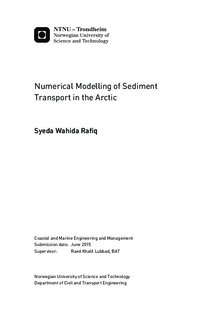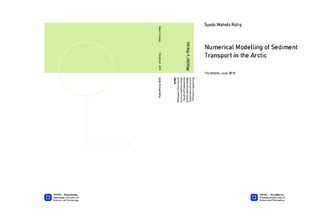| dc.description.abstract | The purpose of this research is to model coastal erosion mainly dune or bluff erosion in the Arctic for storm event using numerical analysis. A case study of Varandey, Russia is considered for the analysis. The numerical modelling done can be divided in two parts, i.e., (i) wave modelling and (ii) coastal erosion modelling. Wave modelling is carried out to transform the offshore boundary condition to a near-shore boundary and thereby to down-scale the domain area for erosion analysis. For wave modelling, SWAN has been used as numerical tool. For cliff erosion modelling during storm period, use of X-beach is considered.
The wave boundary conditions derived from SWAN run is used for X-beach run and a model is set up for assessing cliff erosion of the area. The model is calibrated using the data available from a storm event on 24th July 2010 and found to be valid. Sensitivity analysis of some parameters utilized in setting up the model is carried out to observe their effect on cliff erosion. Finally a simulation is run with calibrated parameters with 2D bathymetry to have an idea on the applicability of the numerical tool for larger domain. | |

